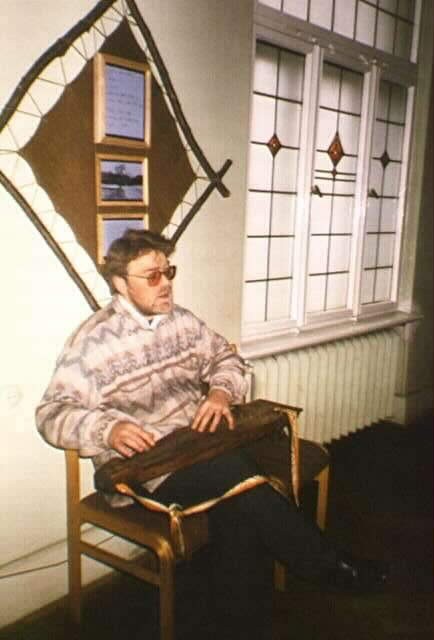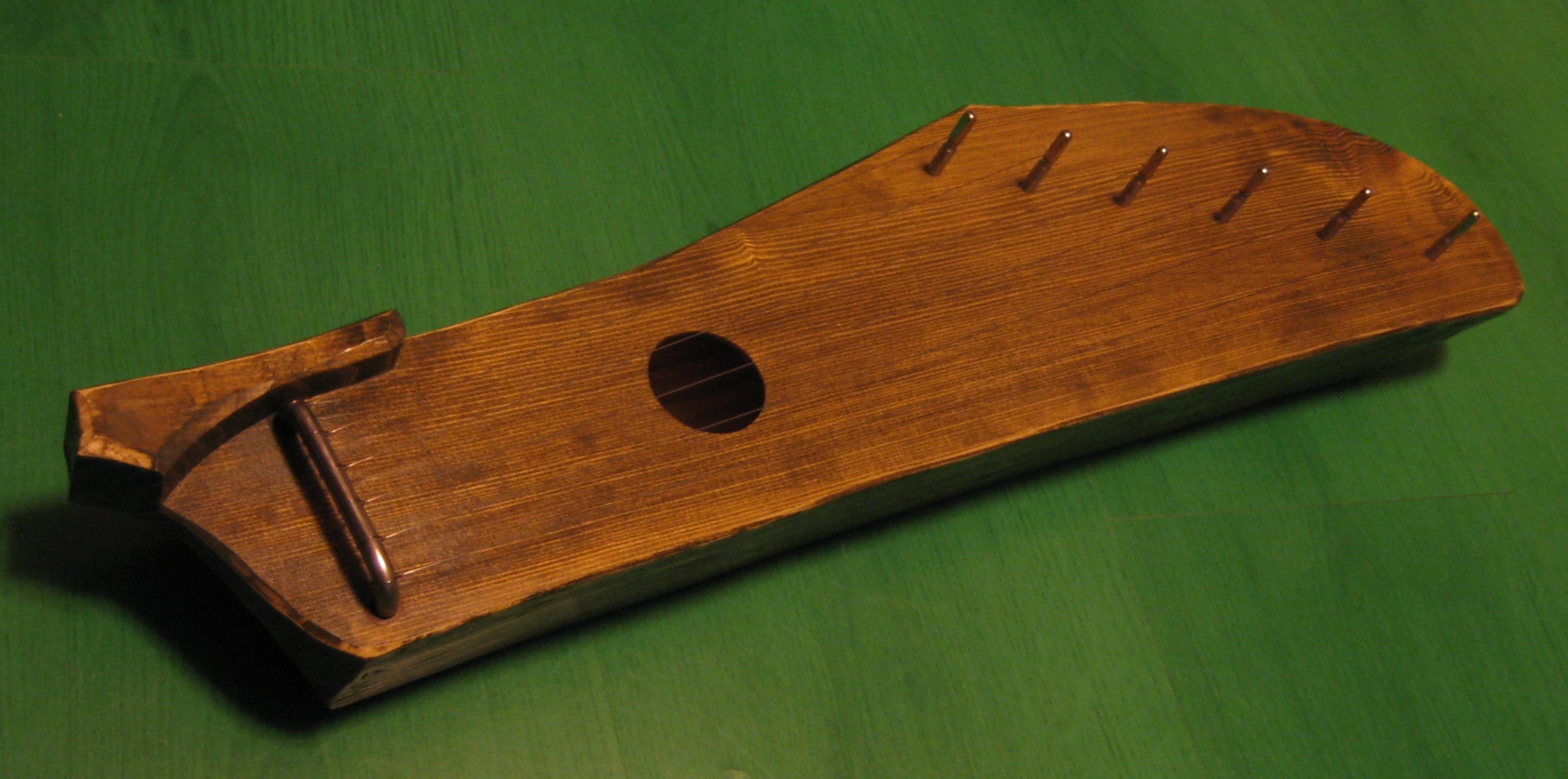|
Kokle
Kokle (; ltg, kūkle) or historically kokles (''kūkles'') is a Latvian plucked string instrument (chordophone) belonging to the Baltic box zither family known as the Baltic psaltery along with Lithuanian kanklės, Estonian kannel, Finnish kantele, and Russian krylovidnye gusli. The first possible kokles related archaeological findings in the territory of modern Latvia are from the 13th century, while the first reliable written information about kokles playing comes from the beginning of the 17th century. The first known kokles tune was notated in 1891, but the first kokles recordings into gramophone records and movies were made in 1930s. Both kokles and kokles playing are included in the Latvian Culture Canon. Etymology According to Finnish linguist Eino Nieminen, the name of the instrument, along with the names of most of its neighbouring counterparts (Lithuanian ''kanklės'', Finnish ''kantele'', Estonian ''kannel'' and Livonian ''kāndla''), possibly comes from the proto-B ... [...More Info...] [...Related Items...] OR: [Wikipedia] [Google] [Baidu] |
Valdis Muktupāvels
Valdis Muktupāvels (9 November 1958 in Līvāni) is a Latvian ethnomusicologist, composer, musician, teacher and doctor of art criticism. Muktupāvels graduated 1980 from the University of Latvia and acquired a specialty in chemistry in 1983. He completed the Jāzeps Vītols Latvian Academy of Music in 1996 with a doctorate in art criticism. Muktupāvels has worked for the University of Latvia since 1989; since 1999 at the Art History and Philology Faculty, and since 2002 as a professor. Muktupāvels has been a member of the Latvian National Cultural Council since 2002. He is a pioneer in the revival of traditional instruments in Latvia, and has performed in many countries in Europe, North America, and countries like Australia, India and Japan. He was also the founder and director of the folklore ensemble Rasa, which was active from 1988 to 1998. Muktupāvels is a Magnus Ducatus Poesis participant. Muktupāvels was awarded the Knight's Cross of the Order of the Lithuanian Gra ... [...More Info...] [...Related Items...] OR: [Wikipedia] [Google] [Baidu] |
Baltic Psaltery
Baltic psaltery is a family of related plucked box zithers, psalteries, historically found in the southeast vicinity of the Baltic Sea and played by the Baltic people, Baltic Finns, Volga Finns and northwestern Russians. Types Baltic psalteries include: * Kanklės (Lithuania) * Kantele (Finland, Karelia and Northwest Russia) * Kannel (Estonia) * Kāndla (Livonian people of Northwest Latvia) * Kokles (Latvia) * Krez (Udmurt people of Central Russia) * Krylovidnye gusli (Northwest Russia) * Kusle (Mari people of Central Russia) * Harpu (Sápmi) The internationally most known instrument of the family is Finnish kantele, so its name is sometimes used in English to also refer to other Baltic psalteries as well. Many of the Baltic psalteries hold a strong symbolic significance in their respective countries, including Finland, Latvia, Lithuania, Estonia and Russia, where playing instruction and instrument makers are available. Etymology According to Finnish linguist Eino ... [...More Info...] [...Related Items...] OR: [Wikipedia] [Google] [Baidu] |
Kanklės
Kanklės () is a Lithuanian plucked string instrument (chordophone) belonging to the Baltic box zither family known as the Baltic psaltery, along with the Latvian kokles, Estonian kannel, Finnish kantele, and Russian gusli. Etymology According to Finnish linguist Eino Nieminen, the name of the instrument, along with the names of most of its neighbouring counterparts (Latvian ''kokles'', Finnish ''kantele'', Estonian ''kannel'' and Livonian ''kāndla''), possibly comes from the proto-Baltic form ''*kantlīs''/''*kantlēs'', which originally meant 'the singing tree', most likely deriving from the Proto-Indo-European root ''*qan-'' ('to sing, to sound'; cf. Latin "canto, cantus, canticum", Italian "cantare", French "chanter", English "chant, cantor"). A Lithuanian ethnologist Romualdas Apanavičius believes ''Kanklės'' could be derived from the Proto-European root ''*gan(dh)-'', meaning 'a vessel; a haft (of a sword)', suggesting that it may be related to the Russian wor ... [...More Info...] [...Related Items...] OR: [Wikipedia] [Google] [Baidu] |
Kannel (music)
Kannel () is an Estonian plucked string instrument (chordophone) belonging to the Baltic box zither family known as the Baltic psaltery along with Finnish kantele, Latvian kokles, Lithuanian kanklės, and Russian gusli. The Estonian kannel has a variety of traditional tunings. In Estonia, studying the kannel has made a resurgence after some years of decline. (in ) Etymology According to Finnish linguist , the name of the instrument, along with the names ...[...More Info...] [...Related Items...] OR: [Wikipedia] [Google] [Baidu] |
Kanklės
Kanklės () is a Lithuanian plucked string instrument (chordophone) belonging to the Baltic box zither family known as the Baltic psaltery, along with the Latvian kokles, Estonian kannel, Finnish kantele, and Russian gusli. Etymology According to Finnish linguist Eino Nieminen, the name of the instrument, along with the names of most of its neighbouring counterparts (Latvian ''kokles'', Finnish ''kantele'', Estonian ''kannel'' and Livonian ''kāndla''), possibly comes from the proto-Baltic form ''*kantlīs''/''*kantlēs'', which originally meant 'the singing tree', most likely deriving from the Proto-Indo-European root ''*qan-'' ('to sing, to sound'; cf. Latin "canto, cantus, canticum", Italian "cantare", French "chanter", English "chant, cantor"). A Lithuanian ethnologist Romualdas Apanavičius believes ''Kanklės'' could be derived from the Proto-European root ''*gan(dh)-'', meaning 'a vessel; a haft (of a sword)', suggesting that it may be related to the Russian wor ... [...More Info...] [...Related Items...] OR: [Wikipedia] [Google] [Baidu] |
Kannel (instrument)
Kannel () is an Estonian plucked string instrument (chordophone) belonging to the Baltic box zither family known as the Baltic psaltery along with Finnish kantele, Latvian kokles, Lithuanian kanklės, and Russian gusli. The Estonian kannel has a variety of traditional tunings. In Estonia, studying the kannel has made a resurgence after some years of decline. (in ) Etymology According to Finnish linguist , the name of the instrument, along with the name ...[...More Info...] [...Related Items...] OR: [Wikipedia] [Google] [Baidu] |
Krylovidnye Gusli
''Gusli'' ( rus, гусли, p=ˈɡuslʲɪ) is the oldest East Slavic multi-string plucked instrument, belonging to the zither family, due to its strings being parallel to its resonance board. Its roots lie in Veliky Novgorod in Novgorodian Rus'. It may have a connection to the Byzantine form of the Greek kithara, which in turn derived from the ancient lyre, or might have been imported from Western and Central Europe during the Middle Ages, when the zither had immense popularity. It has its relatives in Europe and throughout the world: kantele in Finland, kannel in Estonia, kanklės in Lithuania, kokles in Latvia, Zither in Germany, citera in the Czech Republic, psalterium in France and so on... Furthermore, the kanun has been found in Arabic countries, and the autoharp, in the United States. It is also related to such ancient instruments as Chinese gu zheng, which has a thousand-year history, and its Japanese relative koto. A stringed musical instrument called is listed a ... [...More Info...] [...Related Items...] OR: [Wikipedia] [Google] [Baidu] |
Gusli
''Gusli'' ( rus, гусли, p=ˈɡuslʲɪ) is the oldest East Slavic multi-string plucked instrument, belonging to the zither family, due to its strings being parallel to its resonance board. Its roots lie in Veliky Novgorod in Novgorodian Rus'. It may have a connection to the Byzantine form of the Greek kithara, which in turn derived from the ancient lyre, or might have been imported from Western and Central Europe during the Middle Ages, when the zither had immense popularity. It has its relatives in Europe and throughout the world: kantele in Finland, kannel in Estonia, kanklės in Lithuania, kokles in Latvia, Zither in Germany, citera in the Czech Republic, psalterium in France and so on... Furthermore, the kanun has been found in Arabic countries, and the autoharp, in the United States. It is also related to such ancient instruments as Chinese gu zheng, which has a thousand-year history, and its Japanese relative koto. A stringed musical instrument called is listed as ... [...More Info...] [...Related Items...] OR: [Wikipedia] [Google] [Baidu] |
Plucked String Instrument
Plucked string instruments are a subcategory of string instruments that are played by plucking the strings. Plucking is a way of pulling and releasing the string in such a way as to give it an impulse that causes the string to vibrate. Plucking can be done with either a finger or a plectrum. Most plucked string instruments belong to the lute family (such as guitar, bass guitar, mandolin, banjo, balalaika, sitar, pipa, etc.), which generally consist of a resonating body, and a neck; the strings run along the neck and can be stopped at different pitches. The zither family (including the Qanún/kanun, autoharp, kantele, gusli, kannel, kankles, kokles, koto, guqin, gu zheng and many others) does not have a neck, and the strings are stretched across the soundboard. In the harp family (including the lyre), the strings are perpendicular to the soundboard and do not run across it. The harpsichord does not fit any of these categories but is also a plucked string instrument, ... [...More Info...] [...Related Items...] OR: [Wikipedia] [Google] [Baidu] |
Kantele
A kantele () or kannel () is a traditional Finnish and Karelian plucked string instrument (chordophone) belonging to the south east Baltic box zither family known as the Baltic psaltery along with Estonian kannel, Latvian kokles, Lithuanian kanklės and Russian gusli. Construction Small kantele Modern instruments with 15 or fewer strings are generally more closely modeled on traditional shapes, and form a category of instrument known as small kantele, in contrast to the modern concert kantele. The oldest forms of kantele have five or six horsehair strings and a wooden body carved from one piece; more modern instruments have metal strings and often a body made from several pieces. The traditional kantele has neither bridge nor nut, the strings run directly from the tuning pegs to a metal bar (''varras'') set into wooden brackets (''ponsi''). Though not acoustically efficient, this construction is part of the distinctive sound of the instrument. The most typical and t ... [...More Info...] [...Related Items...] OR: [Wikipedia] [Google] [Baidu] |
Box Zither
The box zither is a class of stringed instrument in the form of a trapezoid-shaped or rectangular, hollow box. The strings of the box zither are either struck with light hammers or plucked. Among the most popular plucked box zithers are the Arab qānūn and its various derivatives, including the harpsichord (a plucked zither controlled by a keyboard). Historically various people (Lithuanians, Latvians, Livonians, Estonians, Finns, northwest Russians) have played related box-zither type instruments (the so-called Baltic psaltery) in the south east vicinity of the Baltic Sea for centuries. In the United States prominent plucked box zithers include the hammered dulcimer and the autoharp, See also * Zither * Baltic psaltery Baltic psaltery is a family of related plucked box zithers, psalteries, historically found in the southeast vicinity of the Baltic Sea and played by the Baltic people, Baltic Finns, Volga Finns and northwestern Russians. Types Baltic psalt ... Refere ... [...More Info...] [...Related Items...] OR: [Wikipedia] [Google] [Baidu] |
Proto-European
Old Europe is a term coined by the Lithuanian archaeologist Marija Gimbutas to describe what she perceived as a relatively homogeneous pre-Indo-European Neolithic and Copper Age cultural horizon or civilisation in Southeastern Europe and part of Central-Eastern Europe, centred in the Danube River valley. Old Europe is also referred to in some literature as the Danube civilisation. The term 'Danubian culture' was earlier coined by the archaeologist Vere Gordon Childe to describe early farming cultures (e.g. the Linear Pottery culture) which spread westwards and northwards from the Danube valley into Central and Eastern Europe. Old Europe Old Europe, or Neolithic Europe, refers to the time between the Mesolithic and Bronze Age periods in Europe, roughly from 7000 BCE (the approximate time of the first farming societies in Greece) to c. 2000 BCE (the beginning of the Bronze Age in Scandinavia). The duration of the Neolithic varies from place to place: in Southeastern Eur ... [...More Info...] [...Related Items...] OR: [Wikipedia] [Google] [Baidu] |






%2C_MfM.Uni-Leipzig.jpg)
